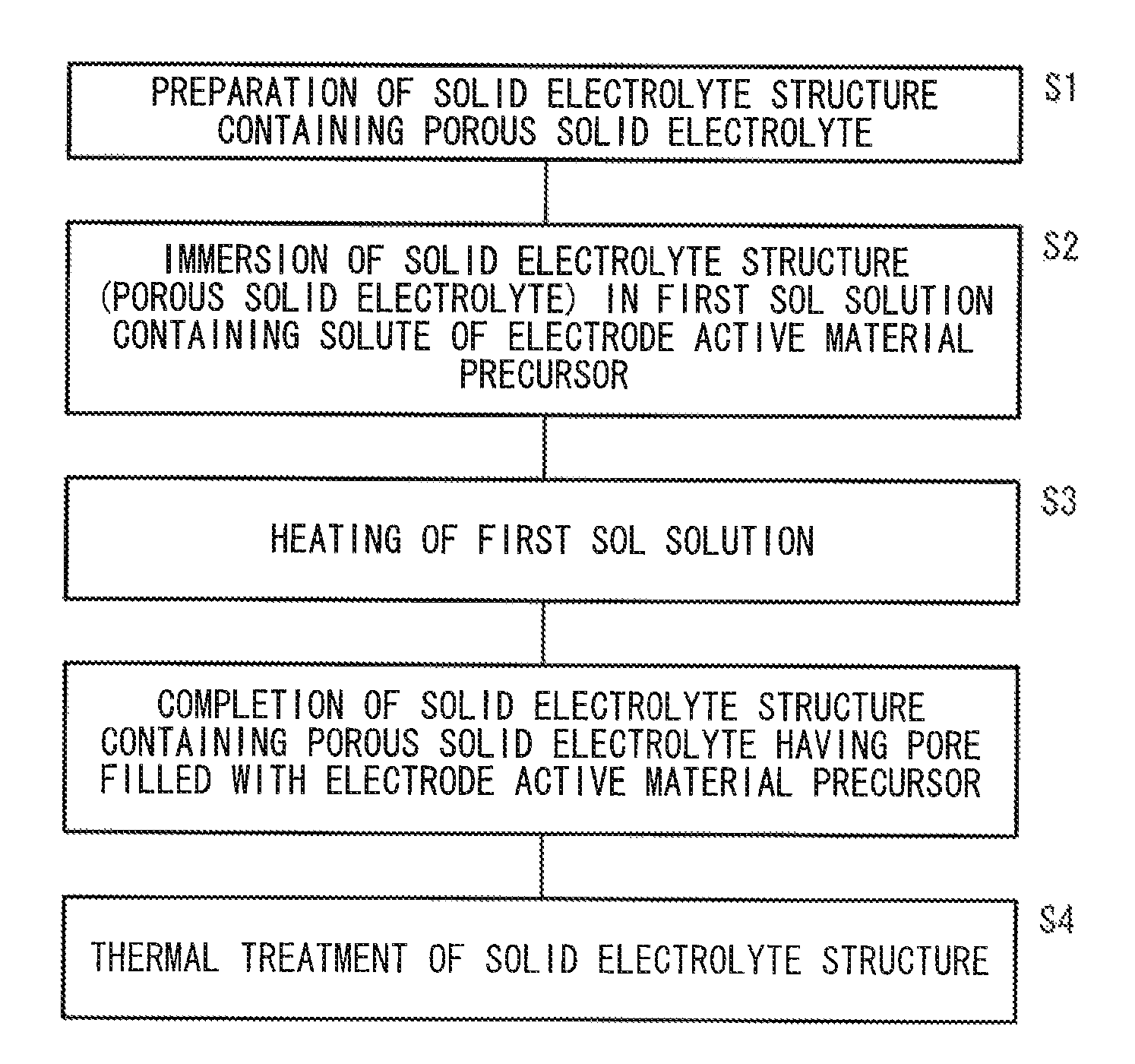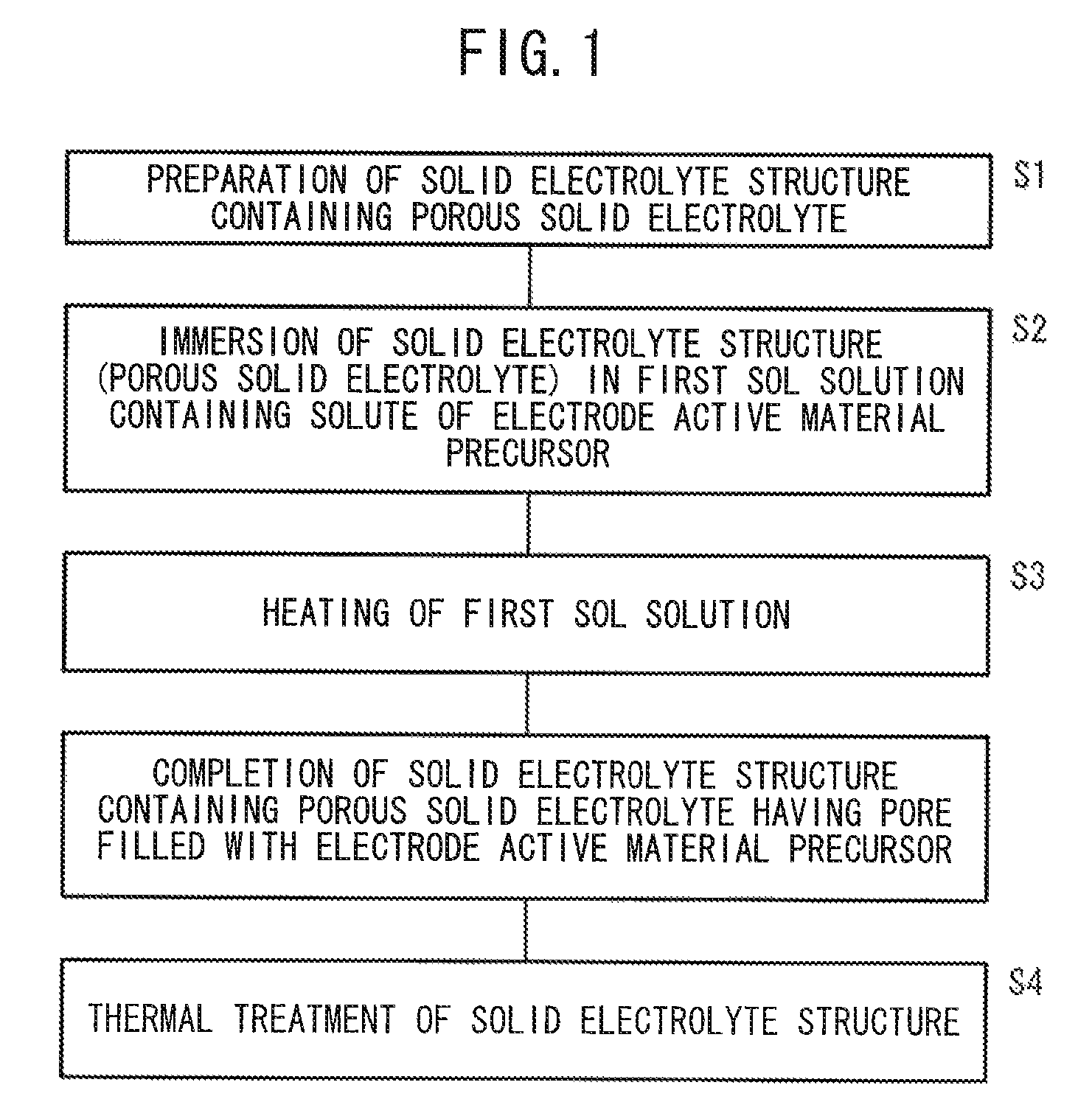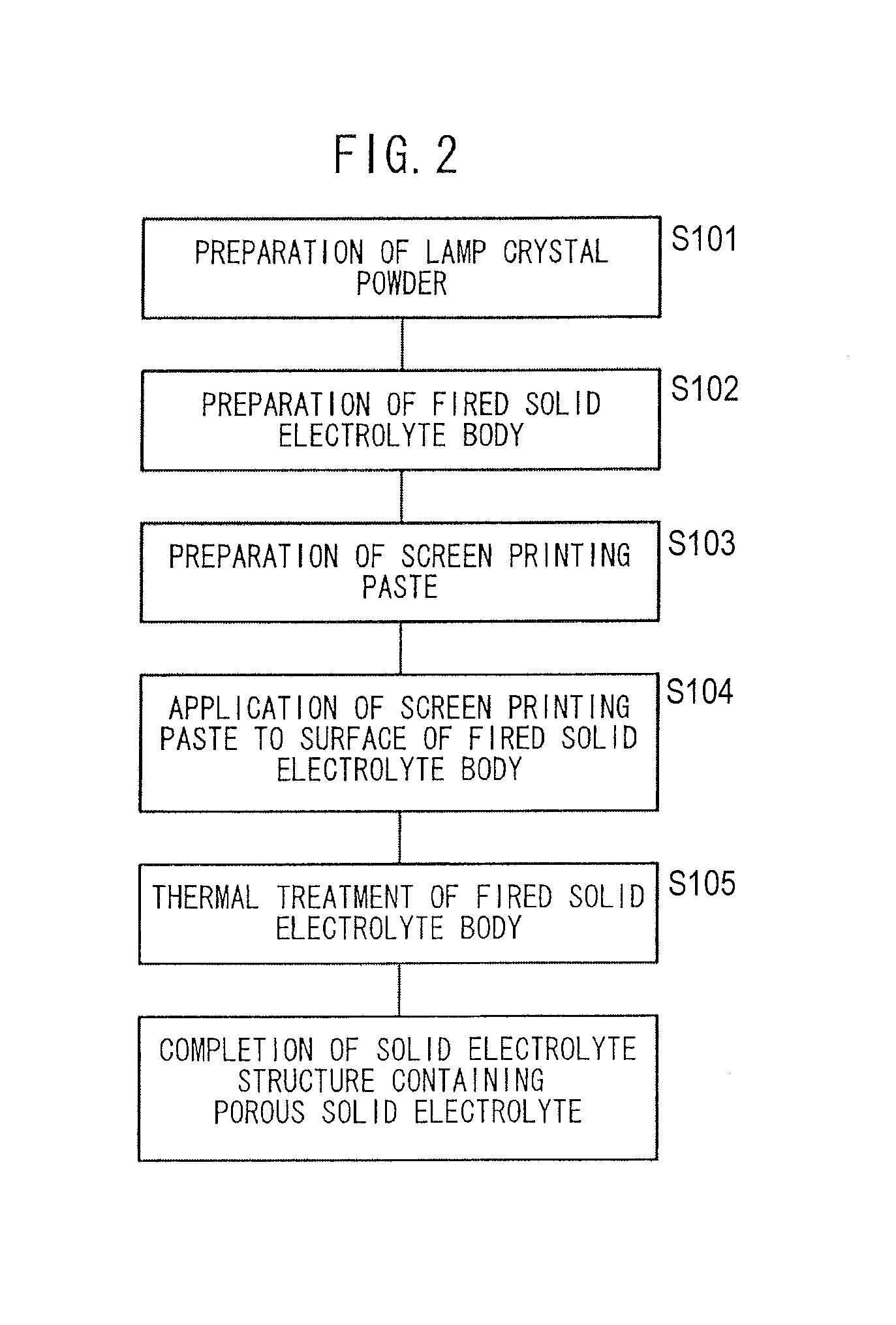Method for filling with electrode active material and method for producing all-solid-state cell
a filling method and active material technology, applied in the direction of non-aqueous electrolyte cells, cell components, sustainable manufacturing/processing, etc., can solve the problems of solution leakage, explosion, reducing the connection resistance, etc., and achieve the effect of efficient filling a por
- Summary
- Abstract
- Description
- Claims
- Application Information
AI Technical Summary
Benefits of technology
Problems solved by technology
Method used
Image
Examples
first example
[0081]First Example will be described below. In First Example, Example 1 and Comparative Example 1 are compared in terms of the degree of filling pores of a porous solid electrolyte with an electrode active material.
example 1
(Preparation of Porous Solid Electrolyte)
[0082]Using a solid-phase synthesis method, powders of Li2CO3, GeO2, Al2O3, and NH4H2 (PO4)3 were mixed at the stoichiometric composition ratio of a solid electrolyte Li1.5Al0.5Ge1.5(PO4)3 (LAGP) and fired at 900° C. in the air, to obtain a crystal powder of the LAGP (hereinafter referred to as the LAGP crystal powder).
[0083]The obtained LAGP crystal powder was formed by press molding into a pressed powder pellet having a diameter of approximately 16 mm and a height (a thickness) of approximately 1 mm. The pressed powder pellet was fired at 840° C. in the air to obtain a fired LAGP solid electrolyte pellet.
[0084]Then, a paste for screen printing was prepared using the LAGP crystal powder. In this example, depending on desired pores to be formed in a porous layer, a binder of S-LEC B (trade name) available from Sekisui Chemical Co., Ltd., an organic solvent of CS-12 (trade name) available from Chisso Corporation, and a pore forming agent of th...
second example
[0092]Second Example will be described below. In Second Example, Example 2 and Comparative Example 2 are compared in terms of the degree of filling pores of a porous solid electrolyte with an electrode active material.
PUM
| Property | Measurement | Unit |
|---|---|---|
| thickness | aaaaa | aaaaa |
| height | aaaaa | aaaaa |
| diameter | aaaaa | aaaaa |
Abstract
Description
Claims
Application Information
 Login to View More
Login to View More - R&D
- Intellectual Property
- Life Sciences
- Materials
- Tech Scout
- Unparalleled Data Quality
- Higher Quality Content
- 60% Fewer Hallucinations
Browse by: Latest US Patents, China's latest patents, Technical Efficacy Thesaurus, Application Domain, Technology Topic, Popular Technical Reports.
© 2025 PatSnap. All rights reserved.Legal|Privacy policy|Modern Slavery Act Transparency Statement|Sitemap|About US| Contact US: help@patsnap.com



